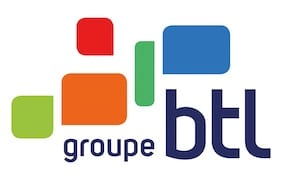L’approche ‘premium’ de BTL : découvrez l’entretien du PDG dans Décideurs
« Parvenir à une finesse qui dépasse le seul vocabulaire »
Selon Damien Delmotte, PDG du Groupe BTL, cela implique « choisir les mots-clés adaptés au public, les intercalaires, le registre de langage, les mots d’esprit éventuels, dans le respect de la culture du public cible. » Dans un entretien paru en juin 2024 dans Décideurs Magazine, il revient sur le dispositif pédagogique au cœur de notre approche premium de l’apprentissage linguistique.
Paroles d’experts : Qu’est-ce qui caractérise une stratégie de haut niveau en matière d’apprentissage des langues ?
Rendez-vous sur Décideurs pour découvrir l’article dans son intégralité ! L’interview a permis de poser des questions approfondies sur la préparation d’une formation avant même qu’elle ne commence, et sur l’évaluation continue qui se déroule en parallèle :
Nous faisons avec nos clients des points annuels pour identifier et mettre à jour les attentes, objectifs et contextes, qui peuvent changer selon la stratégie des entreprises, afin d’être au plus près de leur réalité et de leurs besoins.
Qu’en est-il de la pédagogie ? La discussion porte sur de nombreux aspects de notre approche communicative et contextualisée, par exemple :
La grammaire est conçue comme un outil de communication : nous la faisons vivre en proposant des mises en situation sur des cas réels.
…L’idée est d’être capable de transmettre les vrais jargons et codes, sans s’en tenir à une simple traduction des termes appris.
L’entretien revient également sur les réussites concrètes de nos clients, dont la formation des hauts postes pour des présentations orales et écrites. La perspective BTL :
Ces missions relèvent plutôt du coaching et de la haute couture, compte tenu de leur singularité !
Comme l’ont affirmé Décideurs eux-mêmes dans un récent article, les langues étrangères sont un véritable défi pour la créativité et la compétitivité d’une entreprise. N’hésitez-pas à consulter un conseiller BTL pour discuter de votre contexte et de vos enjeux en matière de compétences en langues.
Pour en savoir plus sur nos prestations de coaching >
Découvrez nos solutions sur mesure pour vos projets ciblés >




